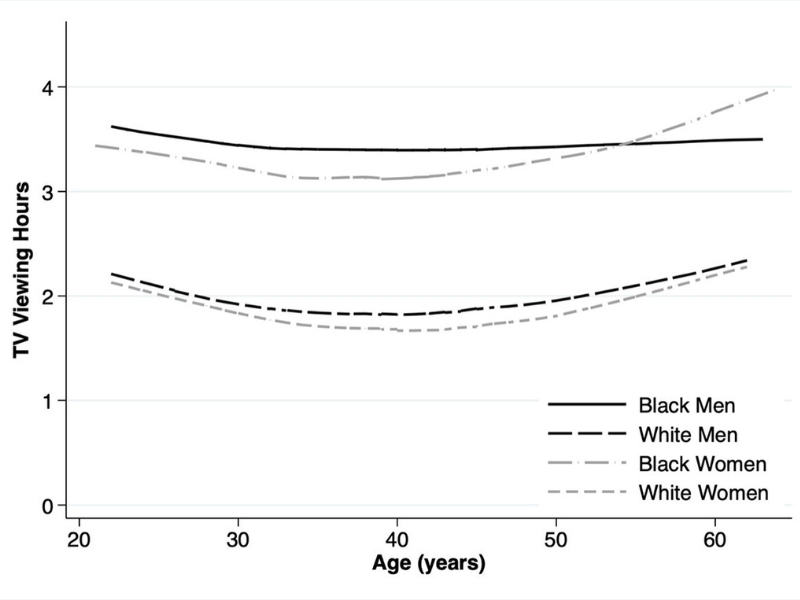Channeling Health
Television viewing in young adulthood, as well as increasing TV time with age, are associated with a higher risk of heart disease and related health concerns.

Read Time: 3 minutes
Published:
Picture this: you’ve had a long day, and all you want to do is put your feet up and watch your favorite show. We’ve all been there. But could this seemingly harmless habit be chipping away at your heart health?
A recent study by Jason M. Nagata and his team examined the association between TV viewing time, age, and cardiovascular disease (CVD) risk factors. They analyzed data from the Coronary Artery Risk Development in Young Adults (CARDIA) study, which followed over 5,000 Black and White adults recruited from Birmingham, Chicago, Minneapolis, and Oakland for thirty years. The researchers looked at how TV viewing habits changed from young adulthood to middle age and whether this change was linked to a higher incidence of CVD risk factors like hypertension, diabetes, and obesity.
The team found that more hours of TV viewing in young adulthood, as well as increasing TV time in the following decades, were each associated with a higher risk of heart disease and related illnesses like high blood pressure and diabetes. This held true even after accounting for exercise habits, suggesting that the sedentary time spent watching TV – over 3 hours per day on average in this cohort – may be detrimental to heart health regardless of a person’s physical activity. More TV time has also been associated with higher calorie consumption and poorer diet, further elevating the risk for CVD.

The graph above reveals that average TV viewing time increased with age for all race and sex groups, most noticeably after the mid-40s. Black men consistently watched the most TV across the age span, while Black women saw the largest overall increase, going from about 3 hours per day in their early 20s to nearly 4 hours by their early 60s. By their late 50s, Black women surpassed Black men in TV viewing time. These trajectories suggest that as people get older, they tend to spend more time watching TV, potentially elevating their CVD risk.
Several factors could explain age-related rise in TV habits. Previous research has found that lower neighborhood socioeconomic status is associated with a higher odds of watching TV for over 5 hours per day compared to those living in the highest socioeconomic status neighborhoods. Neighborhood environment likely plays a role too – living in an area lacking safe, accessible walking paths or destinations within walking distance may lead to more sedentary indoor time. Older adults may also have less time and energy for active leisure or face mobility limitations. The CARDIA cohort is still largely of working age, so it would be valuable for future studies to consider how occupation type, such as having a desk job, influences sedentary leisure habits.
The researchers highlight that limiting TV time in young adulthood may help avoid escalating viewing habits over time. Promoting more active leisure activities and reducing prolonged uninterrupted sitting are important steps to curb sedentary habits and protect heart health.
So next time you’re tempted to sit and binge-watch, remember: your heart’s counting on you to take a break and take a walk.
Databyte via Jason M. Nagata, Eric Vittinghoff, Erin E. Dooley, et al. TV Viewing From Young Adulthood to Middle Age and Cardiovascular Disease Risk. American Journal of Preventive Medicine, 2024.



